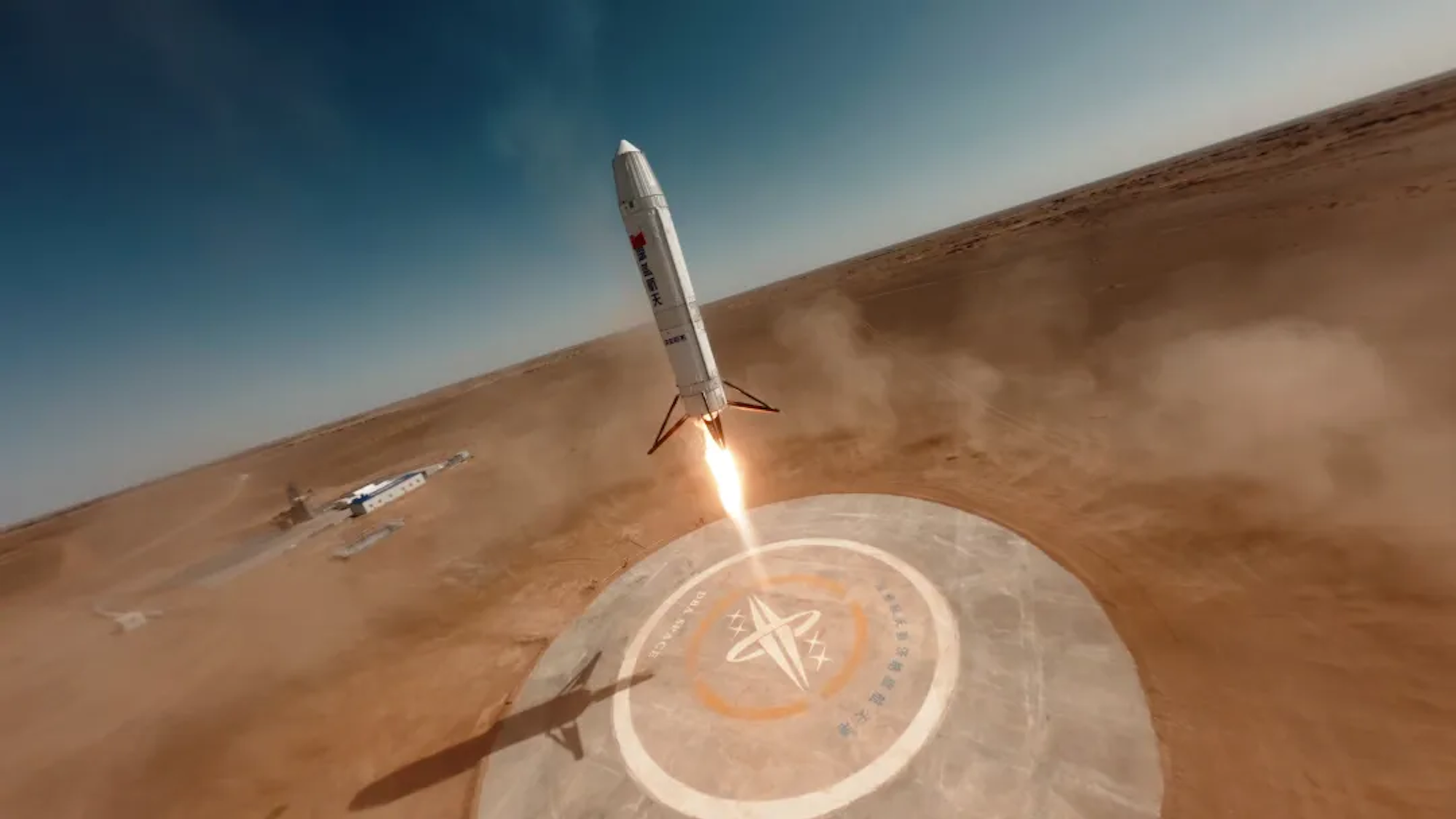Chinese startup Deep Blue Aerospace narrowly missed completing the first successful high-altitude vertical recovery flight test for its Nebula-1 rocket on September 22. After launching from the Ejin Banner Spaceport in Inner Mongolia, the first-of-its-kind, kerosene-fueled reusable vehicle ascended to an altitude of roughly 3.1 mi before attempting to touch down approximately two-and-a-half minutes after takeoff. The results, captured by 360-degree aerial video
footage taken by nearby drones, depict a dramatic, fiery finale.
As Ars Technica reported on Monday, the nearly 69-foot-tall Nebula-1 rocket features an 11-foot diameter, making it about a foot thinner than SpaceX’s Falcon 9. Like its US counterpart, however, Deep Blue’s design is also fueled by kerosene-liquid oxygen engines. Three “Thunder-R” engines power the Nebula-1, 90-percent of which is built using high-temperature alloy 3D printing technology.
In an official statement, the company explains that the propellant type is the most efficient, cheapest, and safest choice for commercial reusable rockets. Still, they explained that due to kerosene-liquid oxygen’s inherent regulation and stability issues, there are still challenges to designing a reliable propulsion system.
Deep Blue’s rundown states all three Thunder-R engines ignited as planned at launch. Once the rocket reached its maximum altitude, its two side engines shut off while the single remaining one worked to stabilize and descend the vehicle. After moving sideways for an estimated 656-feet, it then deployed its landing legs at the correct height above its Gobi Desert recovery platform. Just before shutdown, Deep Blue reported a less-than-1.7-foot error between Nebula-1 and its projected landing point. Seconds after, however, Deep Blue said an “abnormality occurred” which partially damaged the rocket body during Nebula-1’s final landing shutdown phase. Video
footage shows a sizable explosion around the Thunder-R engines, while additional photos provided by the company indicate the rocket subsequently tipped over on its side. The resulting collapse appears to have caused the upper portion to break off from the main fuselage.
[Related: SpaceX’s historic Falcon 9 success streak met a fiery end.]
Despite the last-second malfunction, the test marks a major step forward in the company’s progress towards providing the first reusable orbital rocket for China’s space and satellite industries. Along with Deep Blue, multiple other Chinese-based startups such as iSpace, Galactic Energy, and Space Pioneer are pursuing similar rocketry projects. These companies hope to provide products rivaling SpaceX’s Falcon-9 in the coming years in order to meet the nation’s intensive commercial and military orbital demands. Reuters reports that after post-launch analysis and retooling, Deep Blue says it plans on conducting its next Nebula-1 test flight in November. The new timeline leaves less than two months to achieve the company’s ambitious goal of achieving orbital entry and recovery by the end of the year.

